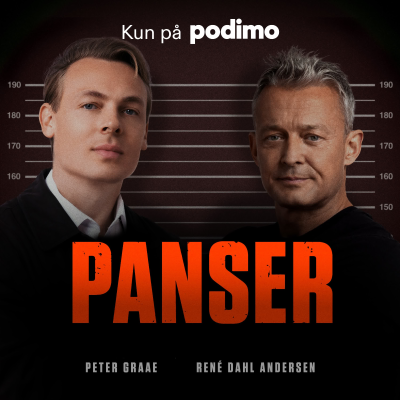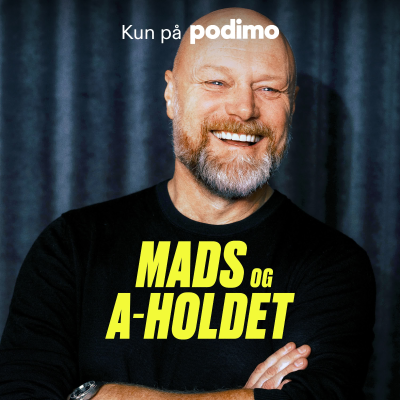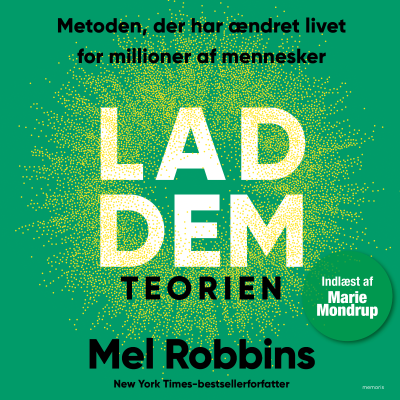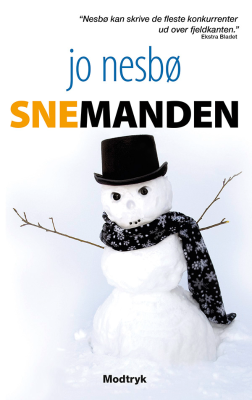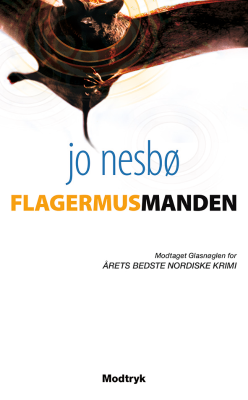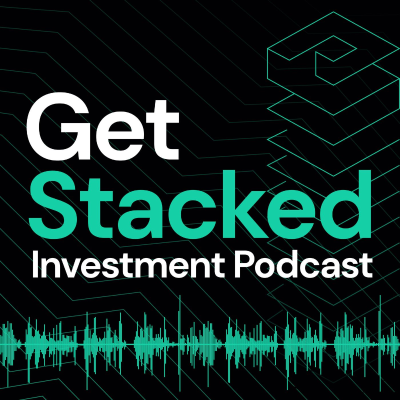
Get Stacked Investment Podcast
engelsk
Business
Begrænset tilbud
3 måneder kun 9 kr.
Derefter 99 kr. / månedOpsig når som helst.
- 20 lydbogstimer pr. måned
- Podcasts kun på Podimo
- Gratis podcasts
Læs mere Get Stacked Investment Podcast
Join Corey Hoffstein and Rodrigo Gordillo as they explore the world of return stacking with insights from leading experts and real-world applications. Break away from traditional portfolio construction and rethink successful investing.
Alle episoder
20 episoderSTACKED UNPACKED: Quarterly Live Q&A
In this episode, Corey Hoffstein and Adam Butler take you inside the latest Q2 commentary on the Return Stacked® ETF suite. They break down key strategies behind ETFs like RSSX, RSSB, RSBT, and RSST—covering everything from performance differentials in trend strategies to the mechanics of trend model replication. You’ll hear sharp analysis of return stack carry funds, year-to-date performance, and how they behave in multi-asset portfolios. The hosts also explore fixed income sector positioning, the role of energy exposure, and why merger arbitrage deserves a closer look as a diversifier. The episode wraps with the new RSSX ETF, blending U.S. stocks, gold, and Bitcoin to meet evolving market demands. *Investors should carefully consider the investment objectives, risks, charges and expenses of the Return Stacked® ETFs. This and other important information about the ETFs is contained in their prospectuses, which can be obtained by calling 1-844-737-3001 or clicking here. The prospectuses should be read carefully before investing. **The performance data quoted above represents past performance. Past performance does not guarantee future results. The investment return and principal value of an investment will fluctuate so that an investor's shares, when sold or redeemed, may be worth more or less than their original cost, and current performance may be lower or higher than the performance quoted above. RSSX does not invest directly in Bitcoin or Gold. For prospectus, performance and risks visit the fund pages. RSST – https://www.returnstackedetfs.com/rsst-return-stacked-us-stocks-managed-futures/ RSBT – https://www.returnstackedetfs.com/rsbt-return-stacked-bonds-managed-futures/ RSSY – https://www.returnstackedetfs.com/rssy-return-stacked-us-stocks-futures-yield/ RSBY – https://www.returnstackedetfs.com/rsby-return-stacked-bonds-futures-yield/ RSBA – https://www.returnstackedetfs.com/rsba-return-stacked-bonds-merger-arbitrage/ RSSX – https://www.returnstackedetfs.com/rssx-return-stacked-us-stocks-gold-bitcoin/ BTGD – https://quantifyfunds.com/stackedbitcoingoldetf/btgd/ Forside Fund Services, LLC Distributor. (0:00) Introduction to the Get Stacked Investment Podcast and symposium announcement (5:49) Overview of new ETFs: RSSX, RSSB, RSBT, and RSST (10:29) Performance differentials in RSSB and trend strategies (18:00) Performance tracking and replication strategy of trend models (23:42) Analysis of performance drivers in trend strategy (29:22) Year-to-date return of the trend model and currency trends (31:17) Introduction to return stack carry funds and strategy primer (36:12) Performance and correlation of carry strategy since inception (39:15) Energy potential in portfolio and fixed income sector analysis (44:43) Combining trend and carry strategies in portfolio construction (48:59) Comparison with GSAM cross asset carry index (52:25) Bonds and merger arbitrage strategy introduction and explanation (56:37) Merger arbitrage as a diversifier and comparison with corporate bonds (59:53) Introduction and rationale behind RSSX: US stocks, gold, and Bitcoin ETF (1:07:37) Closing remarks and symposium reminder
E16. From Fringe to Foundational: The Case for Bitcoin in the Modern Portfolio
In this episode, Rodrigo Gordillo, President of ReSolve Asset Management Global, and Mike Philbrick, CEO of ReSolve Asset Management Global unpack Ric Edelman’s bold argument for allocating 10–40% of a portfolio to Bitcoin. They explore how Bitcoin is evolving from a fringe asset to a foundational one, discuss its role alongside gold, and examine the structural shifts—from regulatory clarity to ETF innovation—that are driving institutional adoption. If you're rethinking diversification in a changing economic landscape, this conversation delivers the key insights. (0:00) Introduction to the Get Stacked Investment Podcast (2:45) Introduction of podcast hosts and disclaimers (3:33) Bitcoin as a digital hard currency compared to gold (7:22) Regulatory clarity and adoption of Bitcoin in portfolios (10:01) Evolving landscape for Bitcoin in traditional finance (13:11) Risk premium of non-cashflow assets (20:05) Benefits and methods of return stacking with Bitcoin (24:34) Behavioral biases in long-term Bitcoin allocation (26:28) Portfolio construction and the Bitwise paper on Bitcoin (31:16) Adjusting portfolios for inflation expectations (33:15) Risk budgeting with alternative assets like gold and Bitcoin (37:10) Using volatility as a heuristic for allocation (39:06) Global adoption and diversification with real assets (41:13) Research resources and concluding remarks
Stacking Merger Arbitrage with Corey Hoffstein
In this special interview, Corey Hoffstein sits down with Advisor Analyst to discuss merger arbitrage and its role in portfolio diversification. Corey breaks down how investors can capture the residual spread in merger deals, comparing the strategy to traditional credit markets, and explaining how return stacking and portable alpha can enhance portfolio efficiency. Originally recorded for Advisor Analyst (advisoranalyst.com), this conversation offers valuable insights for investors exploring alternative risk premia and advanced portfolio construction techniques. (0:00) Introduction and mission statement (2:14) Merger arbitrage: Explanation, diversification benefits, and risk premium (9:44) Merger arbitrage in financial advisory (12:15) The return stacking approach and democratizing institutional strategies (15:34) Call to action and closing remarks
Mastering Diversified Carry with Adam Butler
In this exclusive interview hosted by Advisor Analyst (advisoranalyst.com), Adam Butler dives deep into the mechanics of diversified carry strategies, cross-asset risk management, and return stacking. Adam unpacks the technical and practical definitions of carry, explains how the strategy operates across currencies, bonds, equities, and commodities, and explores how combining carry with trend following and managed futures can provide stable, risk-adjusted returns across economic cycles. (0:00) Event and registration details for the Return Stacking Symposium (0:46) Introduction and disclaimers (2:03) Overview of carry trade and its role in various asset classes (6:57) Diversification and risk management in carry strategies (10:00) Exploring the risk-reward balance in carry trade (12:08) Implementing global diversified carry strategies (15:06) Hedging and examples in carry strategy applications (17:54) Carry strategies for retail investors and market opportunities (21:42) Stock picking vs. carry and macro strategies (24:10) Closing remarks and call to action
E15. Stacking Returns Without Sacrificing Core Exposure: Introducing RSSX
Investors seeking exposure to alternatives like gold and Bitcoin face a tough tradeoff: diversify or stay fully invested in stocks and bonds. What if you didn’t have to choose? In this episode, we unveil Return Stacked® U.S. Stocks & Gold/Bitcoin (RSSX) - an ETF designed to deliver long-term capital appreciation by stacking diversified exposures on top of traditional equity allocations. Discover how RSSX leverages capital-efficient strategies to provide $1 of exposure to U.S. large-cap stocks plus $1 of exposure to a Gold/Bitcoin mix - all for every $1 invested. We’ll walk through the mechanics, behavioral advantages, and real-world application of the latest return-stacking innovation. Whether you're an advisor looking to optimize client portfolios or an investor seeking smarter diversification, this session is a must-listen. *For the RSSX prospectus and risk disclosures, visit: https://www.returnstackedetfs.com/rssx-return-stacked-us-stocks-gold-bitcoin/ [https://www.returnstackedetfs.com/rssx-return-stacked-us-stocks-gold-bitcoin/] **Exposures to gold and bitcoin will be done via exchange-traded funds and futures contracts, hence the fund does not invest directly in bitcoin or any other digital asset, and does not invest directly in gold or gold bullion. ***Standard deviation measures the volatility of an investment's returns, indicating how much they typically vary from the average. ****Investors should carefully consider the investment objectives, risks, charges, and expenses of the Return Stacked® U.S. Stocks & Gold/Bitcoin ETF. This and other important information about the ETF is contained in the prospectus, which can be obtained by calling 1-844-737-3001 or clicking here. The prospectus should be read carefully before investing. *****Quantify Chaos Advisors, LLC ("Quantify") has entered into a brand licensing agreement with Newfound Research LLC ("Newfound") and ReSolve Asset Management SEZC (Cayman) ("ReSolve"), granting the Quantify the right use the "STKd" brand, a derivative of Return Stacked®. Neither the fund trust nor the investment adviser is a party to this agreement. In exchange for the branding rights, Quantify will pay Newfound and ReSolve a fee based on a percentage of the fund's unitary management fee. Distributed by Foreside Fund Services, LLC. (0:00) Introduction to Return Stacking Symposium and Podcast (2:02) Introduction of hosts and guest speaker with overview of ReturnsTac Suite of Funds (3:29) Discussion on US Stocks and Gold Bitcoin ETF (RSSX) and diversification strategies (7:11) Explanation and practical implementation of return stacking (11:34) Strategy design for gold and Bitcoin allocation (24:12) Portfolio implementation with RSSX, strategy overview, and rebalancing (26:23) Q&A introduction, sponsor message, and rebalancing frequency (27:28) Borrowing costs, allocation structure, and risk weighting (34:22) Comparison between RSSX and BTGD, and impact of borrowing costs (39:25) Risk premium expectations for gold and Bitcoin (45:50) Tax efficiency, ETF liquidity, and fee structure (49:11) Portfolio sizing, volatility, and currency hedging (52:15) Hedged ETF costs, drawdowns, and portfolio impact (55:30) Upcoming resources and gold investment skepticism (57:51) Portfolio construction, hedging benefits, and closing remarks
Vælg dit abonnement
Begrænset tilbud
Premium
20 timers lydbøger
Podcasts kun på Podimo
Gratis podcasts
Opsig når som helst
3 måneder kun 9 kr.
Derefter 99 kr. / måned
Premium Plus
100 timers lydbøger
Podcasts kun på Podimo
Gratis podcasts
Opsig når som helst
Prøv gratis i 7 dage
Derefter 129 kr. / måned
3 måneder kun 9 kr. Derefter 99 kr. / måned. Opsig når som helst.



